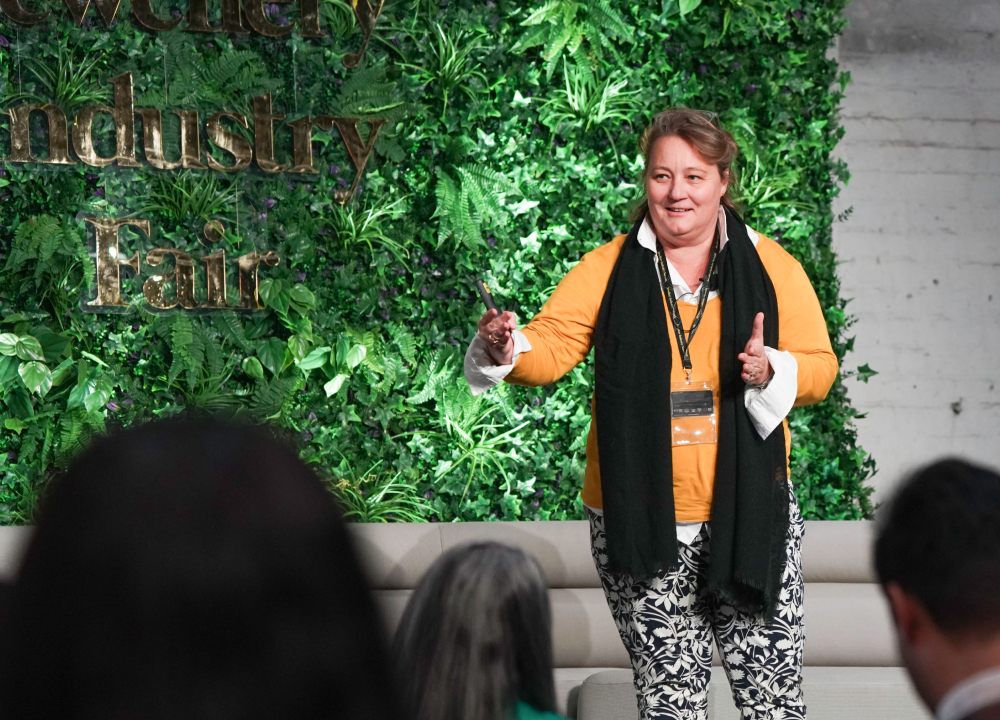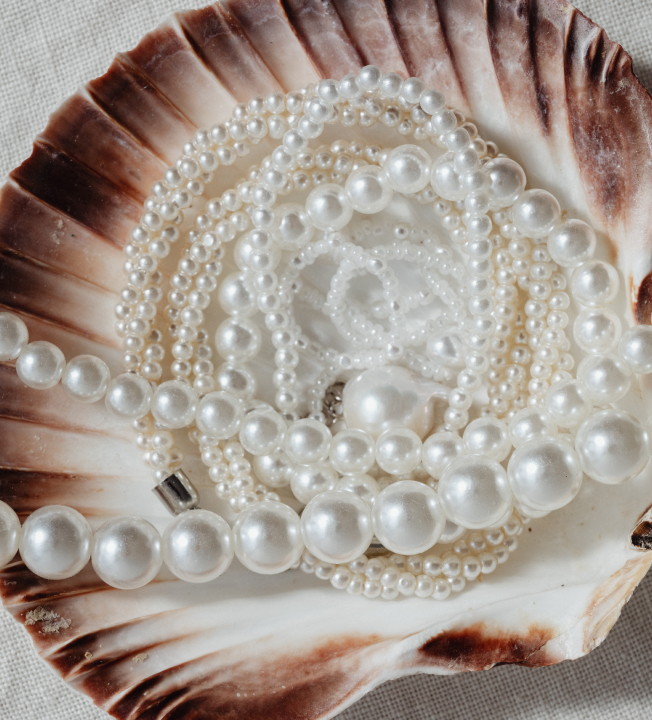
By Ashie Luke
The recent Jewellery Industry Fair in Sydney saw a groundbreaking convergence of minds, with one voice resonating strongly. The visionary entrepreneur, and chief executive officer of Everledger, Leanne Kemp, captivated audiences as she delved into the transformative power of pearls in the pursuit of sustainability. Leveraging her profound insights and expertise, the Jewellery Industry Fair shed light on the remarkable collaboration between Everledger, The Nature Conservancy, the Gemological Institute of America (GIA) and the trailblazing initiative, PearlPoints. This venture has ignited a shift in sustainable pearl farming practices, showcasing how pearls can drive positive ecological, social, and corporate governance outcomes.
Pearls, often cherished as symbols of elegance, have assumed an even more profound role in our world today—the sustainable gemstone. The concerted efforts of PearlPoints’ collaborators have led to a transformation going beyond aesthetics, spearheading a revolution within the pearl farming industry.
The significance of PearlPoints lies in its ability to encompass and optimise the far-reaching impacts of pearl farming. These shimmering gems are not just treasures of the ocean, they have the potential to shape ecosystems, communities, and essential resources. By holistically analysing and enhancing these impacts, pearl farmers have embraced their role as stewards of the environment, aligning their efforts with global sustainability goals, including the Sustainable Development Goals (SDGs).
PearlPoints has bestowed pearl farmers with a powerful tool—a comprehensive resource that offers insights into vital environmental indicators such as greenhouse gas emissions, nutrient release, and land and marine use. This enables farmers to understand the intricate interplay of ecological, social, and corporate dimensions. By understanding these dynamics, they can make more informed decisions, strategically planning a future that resonates with sustainability.
The union of Everledger, The Nature Conservancy, GIA, and other key stakeholders has resulted in a synergy of scientific and technological prowess, setting the stage for PearlPoints’ impactful journey. One of the initiative’s cornerstones is its adoption of an Environmental, Social, and Governance (ESG) assessment framework, under the guidance of The Nature Conservancy. This evaluation approach allows pearl farmers to gauge the broader impacts of their activities, encompassing environmental preservation, social responsibility, and corporate governance.
At its core, PearlPoints emerges as a transformative catalyst, allowing pearl farmers to amplify their commitment to sustainability and reduce ecological impact. This initiative resonates within the expansive landscape of responsible practices driving the jewellery and gemstone industry, sparking a wave of constructive change that extends well beyond the confines of pearl farming.

During her address at the Jewellery Industry Fair, Leanne Kemp illuminated a path toward a regenerative future for the industry. Kemp eloquently navigated the intricate relationships between environmental science, digital technology, and material science, crafting a narrative that underscores their pivotal role in driving sustainable practices. She showcased how digital advancements have the potential to amplify traceability and transparency, particularly through accountable supply chains. Additionally, she emphasised the ecological benefits of lab-grown gemstones and alternative materials, outlining their capacity to mitigate environmental impact.
Kemp’s approach began with a spotlight on environmental science. She illuminated the critical role it plays in comprehending and mitigating the industry’s impact on the environment. Through tangible examples of sustainable practices, she showcased how scientific insights lead to informed decision-making, driving the industry toward a more ecologically responsible future.
Transitioning to digital science, Kemp detailed the power of technology in enhancing traceability and transparency. Through the lens of blockchain and digital platforms, she highlighted how these innovations secure supply chains and cultivate consumer trust. This intersection of technology and transparency emerges as a cornerstone in implementing ethical practices and industry accountability.
Material science took centre stage as Kemp discussed advances that are revolutionising sustainable sourcing. Innovations like lab-grown gemstones emerged as symbols of environmental control. The potential of alternative materials was also underscored, illuminating a path toward a more environmentally friendly approach to jewellery production.
The second segment of Kemp’s address focused on shaping the industry landscape through science-driven initiatives. She masterfully presented case studies illustrating how science is driving positive change in mining and farming practices. Reducing carbon footprints, conserving water, and employing data-driven decisions enhance sustainability and operational efficiency.
Restorative practices were another dimension of science-based transformation, where Kemp explored rehabilitation initiatives in the wake of industry impact. Such endeavours reflect the industry’s commitment to not only minimising harm but also actively contributing to the restoration of ecosystems. This approach, as she explained, benefits not only nature but also local communities and biodiversity.
Storytelling and consumer engagement emerged as a compelling union between science and consumer behaviour. Transparency reports for gemstones and jewellery empower consumers with knowledge about their purchases’ provenance and impact. Kemp further highlighted the potency of ethical storytelling, where emotional engagement with sustainability narratives reshapes consumer choices and behaviours.
In her final section, Kemp delved into the road ahead for a more collaborative and sustainable industry. Industry collaboration was celebrated as a force for shared goals, transcending sector boundaries. These collaborations exemplify the potential for collective impact in encouraging meaningful change.
Science emerged as an incentive that propels the industry toward a responsible and transparent future. Kemp’s talk concluded with a call to action for continued investment in research, innovation, and ethical practices. The transformative power of science remains a guiding light, inspiring the industry to embrace a cooperative relationship with the environment and a commitment to ethical conduct.
Leanne Kemp’s talk at the Jewellery Industry Fair was a resounding reminder of the industry’s capacity for positive change through science. The audience was invited into a world where science is not just a tool but a transformative force, paving the way for a more sustainable, transparent, and ethically-driven industry. The PearlPoints initiative, ignited by collaborative efforts, stands as a testament to the fact that the pursuit of beautiful objects does not always have to diminish the pursuit of a better world — a world where jewellery shines not only on the surface but also in its ecological, social and ethical impacts.
Further reading: